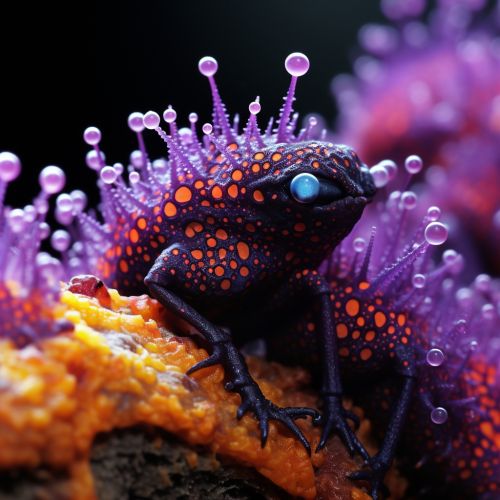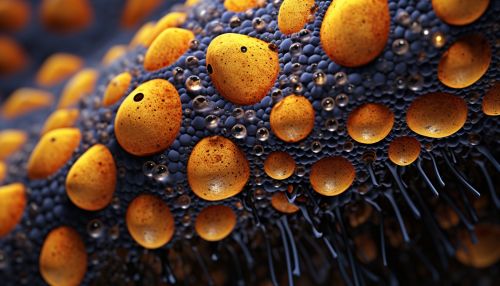Batrachochytrium dendrobatidis
Introduction
Batrachochytrium dendrobatidis (Bd) is a chytrid fungus that is pathogenic to amphibians. It is responsible for the disease chytridiomycosis, which has been linked to global amphibian declines and extinctions.


Taxonomy and Phylogeny
Bd is a member of the Chytridiomycota phylum, which is one of the five major phyla of fungi. It is classified within the order Rhizophydiales, and the family Chytridiaceae. The genus Batrachochytrium, to which Bd belongs, currently contains two recognized species: Batrachochytrium dendrobatidis and Batrachochytrium salamandrivorans (Bsal).
Morphology
Bd has a complex life cycle that includes both asexual and sexual reproduction. It produces motile zoospores that are released from a zoosporangium, a structure that can produce and release multiple rounds of zoospores. The zoospores are flagellated and can swim in water or move along wet surfaces.
Ecology
Bd is found worldwide and has been detected in over 500 amphibian species. It is capable of persisting in the environment outside of its amphibian hosts, and can be found in soil, water, and even on bird feathers.
Pathogenesis and Disease
Bd causes chytridiomycosis, a disease that affects the keratinized skin of amphibians. The disease can lead to a range of symptoms, from subclinical infections to severe disease and death.
Impact on Amphibian Populations
Chytridiomycosis has been linked to declines and extinctions in amphibian populations worldwide. It is considered one of the greatest threats to global amphibian biodiversity.
Research and Conservation
Efforts to combat the spread of Bd and mitigate its impacts on amphibian populations include research into the biology and ecology of the fungus, development of treatments and mitigation strategies, and conservation efforts to protect and restore amphibian populations.
